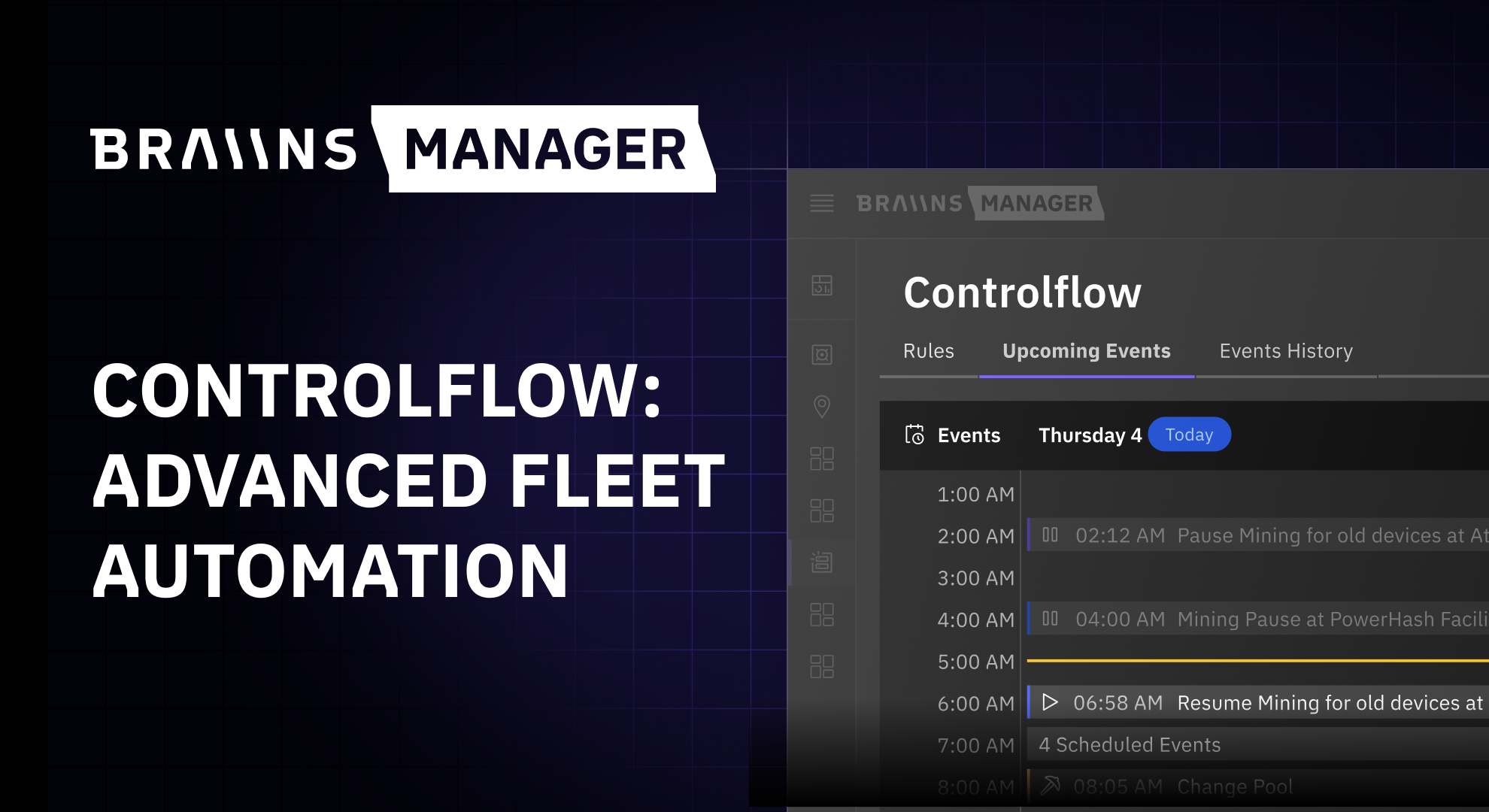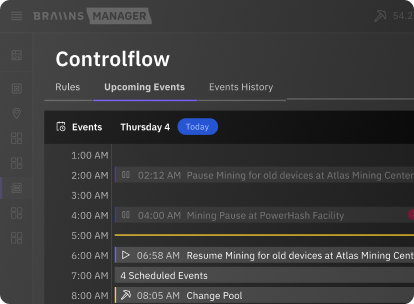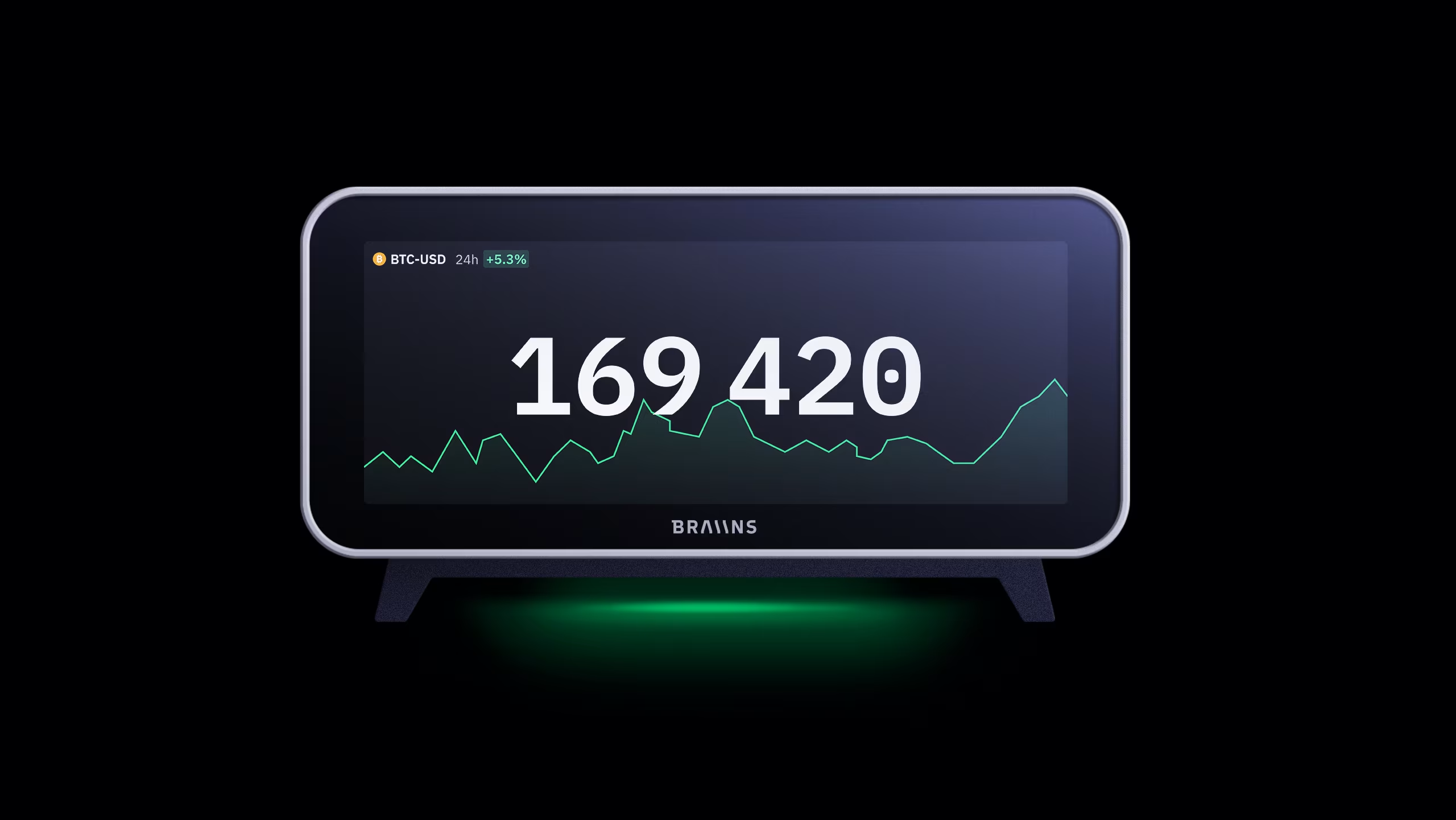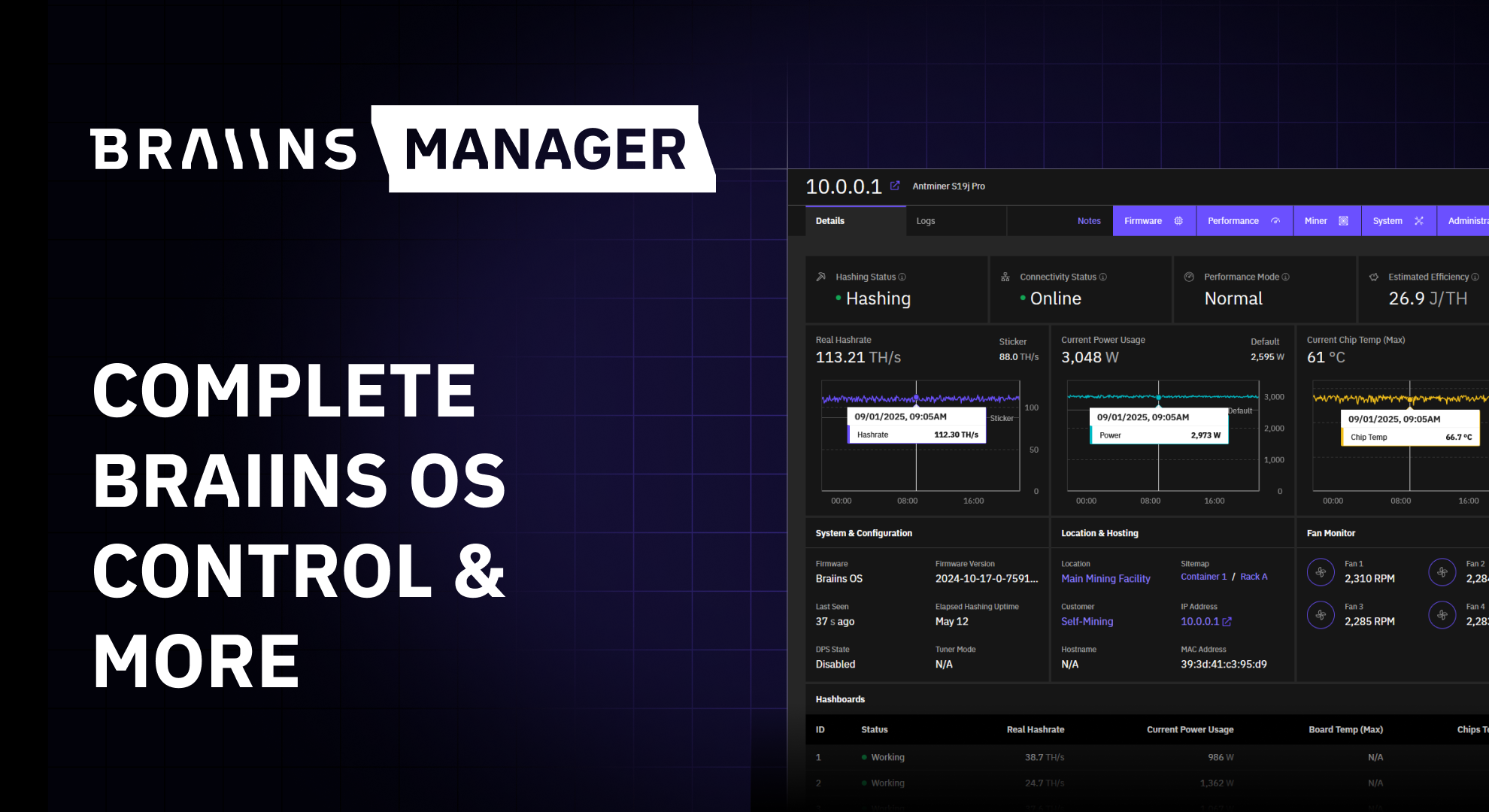Bear Market Mining (Part 1): Setting Expectations
Published
16.5.2022
Thinking through the metrics that matter for miners and how to set expectations and operational boundaries to avoid panic in the future.

Table of Contents
This is the first article in a two-part series on mining during bearish markets. Read Part 2: Optimizing Expenses here.
Bear markets can be a real bummer, and much of the excitement and optimism that motivates a new miner to start their mining journey can quickly evaporate. When the excitement goes, motivation and interest typically follow close behind. This article aims to provide some helpful tips for getting through the first bear market as a new miner by being equipped with tools to stay on track with the original goals of mining and avoid making regretful mistakes.
There are several variables when it comes to Bitcoin mining, like market price, network hashrate, difficulty, electricity prices, infrastructure costs, ASIC efficiency, and the price of the mining machines, to name just a few. Developing an in-depth understanding of any single variable is a monumental task. Being able to decipher the implications of changes in multiple variables and how these changes affect the other variables and how that ultimately affects a mining operation takes years of dedication, patience, and trial and error.
First and foremost, readers should know that no miner gets all the timing and details figured out exactly right the first go-round. Also know that every miner encounters challenges along the way and every miner faces their first bear market at some point. Understanding hashrate and price can be helpful to better manage expectations when the market takes a turn for the worst. By knowing what to expect, it is easier to be better prepared to respond to the situation calmly. All markets are driven by fear and greed, so take the emotion out of decision making by better understanding price and hashrate.
This article will help new miners define and understand hashrate and price thresholds.
Establish Operating Bands.
New miners should ask themselves, “How low can the price go and how high can hashrate get before I should pull the plug?” Establishing these limits will help set thresholds to watch out for so a miner knows ahead of time the logical way to react in a given market situation.
For example, navigate to the “Cost to Mine” tab on the Braiins Mining Insights calculator and follow these steps to see what your operating bands are. A home miner’s hashrate input to the network is static; it is unchanging. If a miner has a 100Th ASIC, they can’t just flip a switch to increase that input to keep up with overall network hashrate growth. Some miners may have spent a significant portion of their life savings acquiring that one ASIC, and they may not be able to deploy more capital on demand to ramp up their operation. There are benefits to knowing how changes in both price and overall hashrate affect a miner’s operation and their unchanging hash contributions.
There are three key pieces of information for each miner to figure out here, which the next three sections explain in detail. Obviously, neither price nor hashrate will stay flat, this is an exercise in discovering a miner’s profitable operating bands.
- Where do you stand today?
- How high can hashrate go if the price stays flat?
- How low can the price go if hashrate stays flat?
Where Do You Stand Today?
Consider a 100TH ASIC that consumes 3,250 Watts and the miner pays the US national average for their electricity: $0.13/kWh. Based on those variables, current difficulty, and current price at the time of writing, they can mine bitcoin for $22,764.50. Great, that is a $16,700.50 discount below the current spot price of $39,465.00 [Fig-01].

Let’s break down how this calculator is computing these numbers to better understand how the variables can be changed to get some thresholds.
Function1 = Block subsidy * miner’s hashrate * seconds in a day:
6.25 * 100,000,000,000,000 * 86,400 = 54,000,000,000,000,000,000
Function2 = Current difficulty * a 32 bit integer for the nonce:
28,225,928,151,211 * 2^32 = 121,229,438,308,696,987,795,456
Function1 ÷ Function2 = reward in bitcoin per day:
54,000,000,000,000,000,000 ÷ 121,229,438,308,696,987,795,456 = 0.00044543
Daily Revenue = miner’s reward * current spot price:
0.00044543 * $39,465.00 = $17.57
Daily OpEx = ASIC power consumption in kilowatts * cost per kWh * 24 hours:
3.25 * 0.13 * 24 = $10.14
Daily Profit = Revenue - OpEx:
$17.57 - $10.14 = $7.43
Ideally, this miner has a day job that funds paying their electricity bill out of pocket so that they can keep 100% of their bitcoin without having to sell some of it each month to cover the electricity bill. Essentially, dollar-cost-averaging through their utility bill for non-KYC bitcoin.
How High Can Hashrate Go?
To set the first threshold, a miner should define what the hashrate would be if their profit were to be break-even at $0.00, meaning they are earning dollar for dollar value in the bitcoin rewards for the price paid in electricity. This will aid in determining if the value received for the money spent on electricity is worth it.
There are two steps to solve for this, figure out how much bitcoin that would be and figure out what the difficulty would be in this scenario. First, if the profit were to be $0.00, then the revenue would need to match the operating expense (OpEx) of $10.14. If the spot price of bitcoin remained flat at $39,465.00, then the miner can simply divide OpEx by spot price:
$10.14 ÷ $39,465.00 = 0.00025693
Second, since the variables in Function1 from above are remaining constant – block subsidy, a miner’s hashrate, and seconds in a day – simply divide the result of Function1 by your break-even rewards:
54,000,000,000,000,000,000 ÷ 0.00025693 = 210,173,977,347,915,774,724,633
Take the above result and divide by 2^32:
210,173,977,347,915,774,724,633 ÷ 2^32 = 48,934,942,425,209
What all of this arithmetic shows is in order to hit the break-even point if the price stays flat, difficulty would need to increase from the current 28.2T to 48.9T, or in other words, hashrate would need to increase roughly 73% (216Eh to 374Eh) and the price would need to stay flat in order to just hit a miner’s break-even point. To put that further into perspective, a 158Eh increase would be roughly equivalent to 1.58 million 100Th ASICs going online.
Double check these calculations by plugging the difficulty result into the online calculator [Fig-02]. This should give a new miner some reassurance about the reality of how much hashrate it would take in order for them to have their mining operation reach a point where their payouts are only matching the dollar-for-dollar value for their operating expenses.
How Low Can The Price Go?
Moving on to the price threshold, assume that the network’s hashrate stays flat at roughly 216EH as it is at the time of writing. Here is how to figure out how low the price could go before reaching the break-even point for a new mining operation.
If hashrate doesn’t change, then mining rewards will stay the same too at, in this case, 0.00044543 per day. Simply take OpEx and divide it by current rewards shown below.
$10.14 ÷ 0.00044543 = $22,764.52
The price of Bitcoin would need to drop to $22,764.52 in order for rewards to only be worth the dollar-for-dollar value spent on electricity to run the ASIC.Double check this work by entering this price into the online calculator [Fig-03].


Something else to consider about this price threshold is that the BTC 200-day Simple Moving Average (SMA) has never gone down and it is currently at $21,456.78. This means that the BTC spot price would need to fall within $1,307.74 of this SMA in order for a miner in this example to reach their break-even point and only earn what they spend to maintain their mining operation. [Fig-04].

Conclusion
After setting an upper bound on hashrate and a lower bound on spot price, a new miner can start to combine these values to fine tune their operating thresholds. This part of the process is more subjective since it is largely based on what they personally believe lies in store for the future of Bitcoin price and hashrate. But the information in this article should help a new miner to better understand how to monitor price and hashrate to manage their expectations and prepare to react logically to stressful market situations to avoid making a mistake on some emotional whim.
One final thing to keep in mind is a miner’s Return On Investment (ROI). Many prospective miners want to know if their money is better spent on mining hardware or just buying bitcoin directly. This topic goes beyond the scope of this article as it involves several more variables beyond hashrate and price, but new miners should be aware that even if they remain within their operating bands defined in this article, they could still end up in a situation where they have not reached a full ROI in bitcoin terms, meaning that they wind up with less bitcoin by the end of their miner’s life cycle than they would have had if they had just bought it directly. Also, if the miner is selling some bitcoin each month to cover utility bills, this also of course affects their bitcoin-denominated ROI.
Bitcoin miners are the most bullish Bitcoiners, and they are typically not deterred by a less-than-favorable ROI projection. In fact, readers may be hard pressed to find a single home miner who continued mining through one or more bear markets and wound up losing money. Hopefully, by better understanding price and hashrate and setting some operating bands, new miners will be better prepared to make good decisions in stressful market situations.
This article was written for the Braiins blog by Econoalchemist, a home mining specialist, writer, and builder at Upstream Data. Follow him on Twitter.
Categories
Be the first to know!
Read Privacy Policy.
Most Recent Articles

Introducing Controlflow: Advanced Automation in Braiins Manager
9.12.2025




